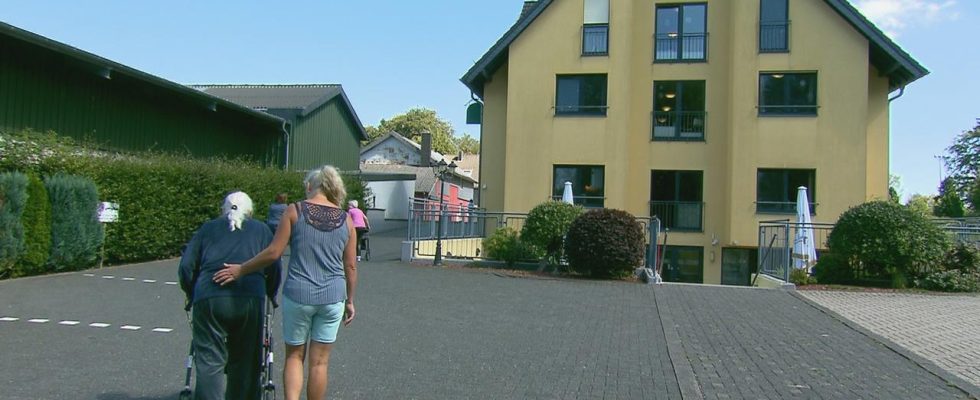background
Dorea, Curata, the Hansa Group: More and more large nursing home operators are filing for bankruptcy. The reasons for this are rising costs and the shortage of skilled workers. It also affects small houses.
The Ursula Lambertz House in Kalterherberg near Monschau is painted friendly yellow, has large windows and a beautiful little park behind the house. “Our waiting list is long. Two people interested in a place call us every day,” says Andreas Nowack, the provisional director of the home. But the home is largely empty. Currently only 17 of the 38 places are occupied. At the beginning of the year, the privately owned house was on the verge of bankruptcy.
“I was really scared, I have to admit that honestly,” remembers Irmtraud Prümmer. The 81-year-old has only lived here for a year. Her family and friends live in the surrounding towns. If the house had been closed, the nearest home for them would have been less than 50 kilometers away.
Are more than a third of the houses making losses?
The problem: The house is actually too small to support itself. Actually, it would need 70 to 80 places to make it worthwhile, says home manager Nowack. He works for the German Red Cross in Aachen, which took over the house three months ago. Not an easy task.
Because the real problem is the lack of skilled personnel. Only with the right staffing ratio could enough residents be admitted. But with the threat of insolvency, many of the skilled workers here were looking for a new job. A difficult spiral that a home first has to get out of. And that’s how it is for many people.
Last year, according to the industry service pflegemarkt.de, 142 nursing homes out of around 11,000 had to close. There were already 200 in the first three months of this year. And according to the Care Report from management consultancy Roland Berger, 37 percent of homes will probably be in the red by the end of the year.
A home must be 98 percent occupied
But how does this happen? In fact, this development is still quite new, observes nursing researcher Thomas Kalwitzki from the University of Bremen. So far, carriers have worked profitably. Nursing homes were popular investment properties for investors and were considered a safe investment.
But the line to the deficit is narrow: If less than 98 percent of the places are occupied, according to the Association for Care for the Elderly and Disabled, a facility slips into the red. And that can happen quickly because there is a lack of staff: According to a study by the University of Bremen, there are currently 100,000 nursing staff too few – and that despite the increasing need for care.
In addition, personnel costs for many facilities increased last year due to collective bargaining. Since September 2022, nursing homes have only been able to bill the health insurance companies for their services if they pay their staff according to the tariff. At the same time, providers can only negotiate with the care insurance companies and adjust their costs once a year, according to care researcher Kalwitzki. “The question is why the providers have not built up sufficient reserves to overcome this difficult situation.”
1,000 euros Welcome bonus and job bike
Non-profit sponsoring companies like the Red Cross in Aachen have it a little easier, as they don’t have to generate returns anywhere near as high as the large chains. “For now, a black zero is enough for us,” says home manager Nowack. That’s why they want to expand to 80 places in Kalterherberg and build a new one. But it won’t be easy here either: construction costs are currently rising dramatically.
The biggest challenge, however, is finding staff – especially in rural areas such as the North Eifel. Seven positions are vacant in the Ursula Lambertz House. “We have put videos on social media, advertisements on sandwich bags, we offer a 1,000 euro welcome bonus, a job bike, retirement provision and a fitness club membership. We are trying to make ourselves more attractive as an employer in every corner – and yet it is difficult.”
After all, they have already gained two to three new employees. This means they can accept new residents again from September.

